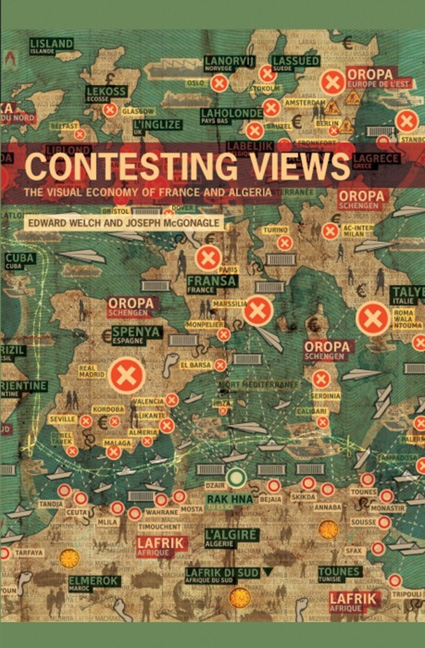Book contents
- Frontmatter
- Contents
- List of Illustrations
- Acknowledgements
- Introduction: Visualising the Franco-Algerian Relationship
- I Algerian Pasts in the French Public Sphere
- 1 Wish We Were There: Nostalgic (Re)visions of France's Algerian Past
- 2 Visions of History: Looking Back at the Algerian War
- 3 Out of the Shadows: The Visual Career of 17 October 1961
- II Mapping Franco-Algerian Borders in Contemporary Visual Culture
- Conclusion
- Notes
- Bibliography
- Index
1 - Wish We Were There: Nostalgic (Re)visions of France's Algerian Past
from I - Algerian Pasts in the French Public Sphere
- Frontmatter
- Contents
- List of Illustrations
- Acknowledgements
- Introduction: Visualising the Franco-Algerian Relationship
- I Algerian Pasts in the French Public Sphere
- 1 Wish We Were There: Nostalgic (Re)visions of France's Algerian Past
- 2 Visions of History: Looking Back at the Algerian War
- 3 Out of the Shadows: The Visual Career of 17 October 1961
- II Mapping Franco-Algerian Borders in Contemporary Visual Culture
- Conclusion
- Notes
- Bibliography
- Index
Summary
Postcards from the Colonies
As France established itself in Algeria during the nineteenth century, visual culture came to have a central role in shaping perceptions and understandings of the new colony. It helped to transform the country, its landscapes and people into objects of knowledge, spectacle and consumption, playing out once again the fundamental interconnection of visuality and imperialism analysed most notably by Mary Louise Pratt (1992). Deborah Cherry (2003) notes how rapidly Western artists, tourists and photographers began to arrive in Algeria, and the excitement with which they set about depicting what they saw. With the subsequent dissemination and circulation of their images, the colony not only ‘entered into visuality’ (Cherry 2003: 41), but did so within an established Western set of aesthetic frameworks and modes of representation such as landscape and portraiture, motivated especially by a sense of the ‘picturesque’.
Moreover, the emergence of what David Prochaska terms an ‘Algérie imaginaire’, or imaginary Algeria, was fuelled especially in the late nineteenth and early twentieth centuries by the technical advance of photography as a medium, and its use in the equally new and fast expanding industry of picture postcard manufacture, which both resulted from and responded to the development of Algeria as a tourist destination (Prochaska 1990; Terpak 2009). Images of Algeria were produced in ever increasing numbers both locally and by the major metropolitan publishers, including Lévy frères and Neurdein in Paris, and Combier in Mâcon, many of whom employed their own photographers to take pictures ‘in the field’ (Prochaska 1990: 375–6). The material produced fell broadly into the genre of scènes et types, constituted both of views of Algeria's cities, towns and landscapes (scènes) and of images depicting different occupations, ways of life and social ‘types’, particularly among the country's indigenous populations. The most notable and notorious examples of the latter, of course, are the exoticising and eroticising images of Algerian women which Malek Alloula set out to ‘return to sender’ with the publication of Le Harem colonial [The Colonial Harem] in 1981.
- Type
- Chapter
- Information
- Contesting ViewsThe Visual Economy of France and Algeria, pp. 13 - 38Publisher: Liverpool University PressPrint publication year: 2013



